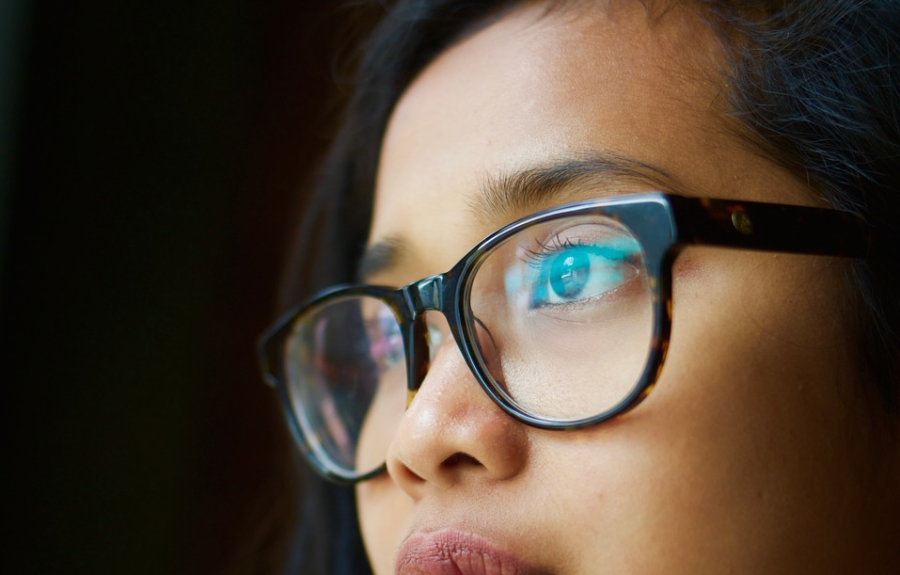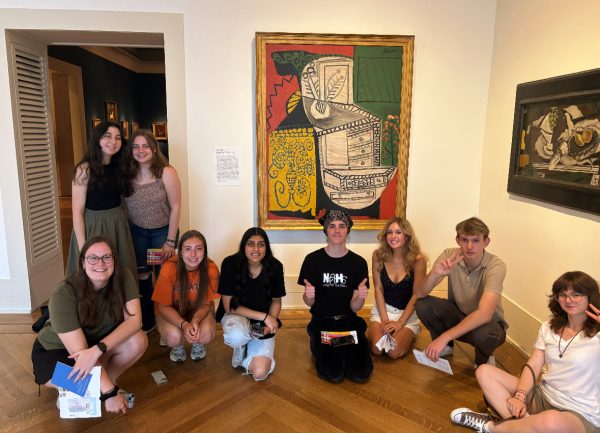Virtual learning drives blue light industry
Students utilize blue light-blocking glasses to prevent digital eye strain
Photo by: Pixabay Free Images
Blue light glasses revolutionize virtual learning.
During the peak of virtual learning, a plethora of students have turned to blue light-blocking glasses in hopes of reducing digital eye strain during the day. Blue light rays emit from several forms of bright screens, including televisions, phones, computers, and fluorescent lights. Eye doctors recommend limiting blue light exposure for at least two hours before bed, and the use of blue light lenses prevents major eye strain, headaches, eye discomfort, dry eyes, and blurred or doubled vision.
Sophomore Elaina Miller shares her thoughts on the newly-popularized glasses, remarking, “I always get horrible migraines from the light, especially during school and online class, and the glasses have cut back on that, so I think that they are effective and that they work.” Additionally, sophomore Olivia Leach stands by the glasses’ durability to withstand the blue light, noting, “I like the blue light glasses, especially at night, because it’s not as harsh on my eyes. I believe that they are pretty effective.”
Sophomore Courtney Phillips explains the possible illusion of the glasses by sharing, “I’ve noticed when I wear them my headaches seem to come less, but I can’t decide if that’s from the actual glasses, or if it is just my brain believing they make a difference.” She continues, “Either way, they seem to have helped so far and aren’t very expensive, so I’m glad I bought them.” This so called “illusion” is commonly known as the placebo effect. A placebo is a “fake” medical treatment that appears real but doesn’t physically treat an ailment; however, because the patient believes that it works, the ailment resolves itself. For example, in a medical test on blue light glasses’ effectiveness, Medical Daily gave a set of blue light-filtering glasses to Group A, and regular, non-filtering glasses to Group B. The study concluded that Group A slept 5% longer and 14% better than Group B, proving the effects that blue light glasses have.
Furthermore, senior Rachel Anderson and junior Emily Whickham explain how they received a built-in blue light filter to their prescribed glasses for vision correction. “I got my blue light lenses with my first pair of glasses, and they make it easier to do my schoolwork on the computer. I think they partially work because I still get headaches from looking at screens,” explains Anderson. Whickham describes the uniqueness of her glasses by sharing, “Personally, I got them as an add-on to my prescription glasses, and I think it’s a pretty neat tool to help, especially with electronics at night.”
Sophomores Caroline Pickels and Kelsey Mirenfield both describe their positive experiences with the glasses. Pickels explains, “I really like them because I would get bad headaches from looking at my Chromebook.” Mirenfield adds, “I think the blue light glasses are great and very effective. I was getting bad headaches at the end of each school day, and they’ve gone away since wearing the glasses.”
For more information, visit:

Kyle Reeder, Class of 2023
Kyle Reeder has been on staff for four years and is the Multi-Media Editor. Outside of school, he runs cross country and...





